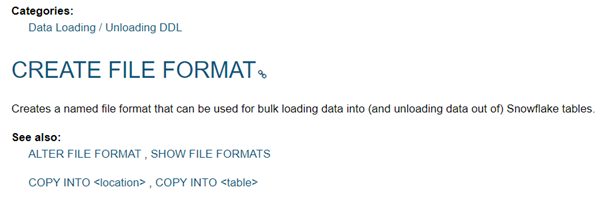Snowflake for SQL Server Users - Part 10 - Working with file formats

One thing that I quite like about Snowflake is the way it cleanly works with a wide variety of file formats.
Obviously this changes over time but at the time of writing, you could COPY from the following source file formats:
- CSV
- JSON
- AVRO
- ORC
- PARQUET
- XML
There are also quite a number of options for configuring how these are used. Apart from the obvious options like record and field delimiters, skipping rows, etc, one of the most important of these options is compression. You can currently choose these options for compression:
- AUTO
- GZIP
- BZ2
- BROTLI
- ZSTD
- DEFLATE
- RAW_DEFLATE
- NONE
I had good outcomes using the AUTO setting. Mostly I’m using zip’d input files.
There are a few options for transforming data while loading it, but they are very limited. For example, you can alias a column or change its position.
Named File Format
Similar to the way you can avoid specifying full file locations every time by creating an external stage, you can avoid specifying all your file format details every time by creating a named file format.
No surprise, that’s done with the CREATE FILE FORMAT command.
Data Export
When you export data, you again use the COPY command, but currently there are less file format options available than there are for input. You can use:
- CSV
- JSON
- PARQUET
I would be surprised if the others aren’t added soon.
For an index to all posts in this series, see the first post here.
2019-10-11
